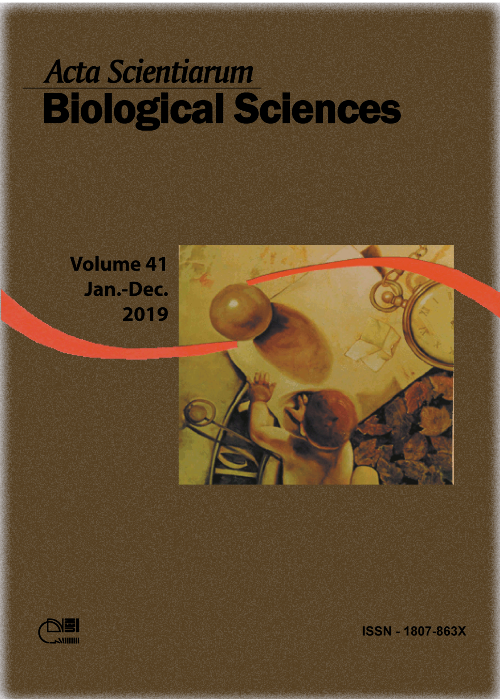Effect of asymmetric competition on distance among <i>Myrmeleon brasiliensis</i> (Návas, 1914) (Neuroptera: Myrmeleontidae) larvae
Abstract
In cases of asymmetric competition, larger individuals of many animal species have a greater probability of acquiring territory, gaining initial access to resources and finding a mate in comparison to smaller individuals. The competition among larvae of the antlion Myrmeleon brasiliensis (Neuroptera, Myrmeleontidae) is observed in the search for space for the construction of traps, in the forage for prey, and in the occurrence of cannibalism. The body size of the larvae is proportional to the size of the traps and the success of predation. Thus, larger specimens are better competitors in terms of capturing preys (asymmetric competition). The aim of the present study was to determine the effects of asymmetric competition in M. brasiliensis regarding the distance among these larvae. The study was developed in a permanent reserve area, located in the municipality of Aquidauana, from the Mato Grosso do Sul state, Brazil. For the laboratory experiments, we collected M. brasiliensis larvae and placed two larvae in plastic pots. The observations occurred by the visual search of traps, when a larva was seen in the diameter of its trap and the trap of its closest neighbor. Next, the trap size and the distance between them were measured for a period of 15 days. The results of the present study demonstrate that the largest M. brasiliensis larvae were outside the clusters. Within these clusters, the larvae moved away from each other because of the size of their traps, as the larger the neighboring larvae the greater the distance between them. Thus, the asymmetric competition between M. brasiliensis (larger larvae are better competitors) suggests a spatial arrangement among the larvae that is guided by the variable size of the trap.
Downloads
DECLARATION OF ORIGINALITY AND COPYRIGHTS
I Declare that current article is original and has not been submitted for publication, in part or in whole, to any other national or international journal.
The copyrights belong exclusively to the authors. Published content is licensed under Creative Commons Attribution 4.0 (CC BY 4.0) guidelines, which allows sharing (copy and distribution of the material in any medium or format) and adaptation (remix, transform, and build upon the material) for any purpose, even commercially, under the terms of attribution.
Read this link for further information on how to use CC BY 4.0 properly.












1.png)




3.png)













